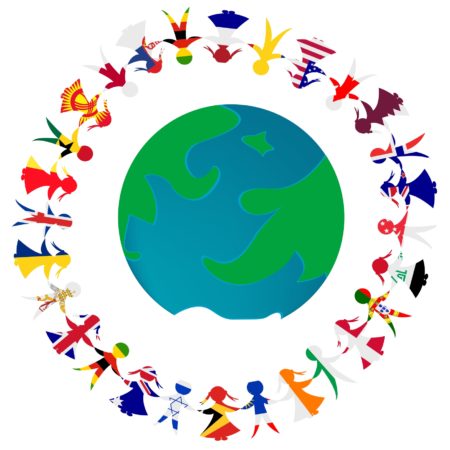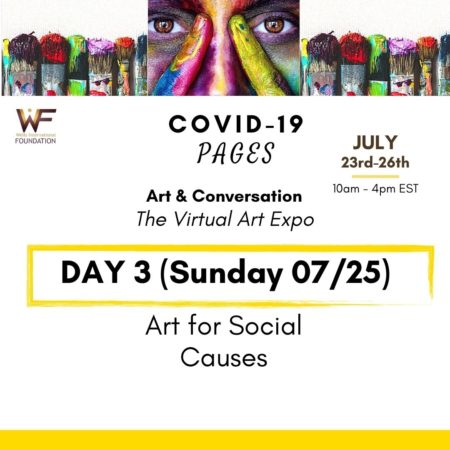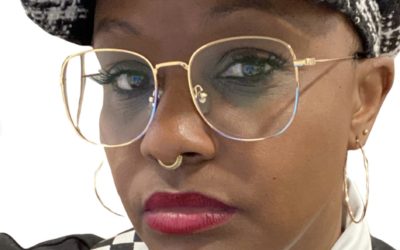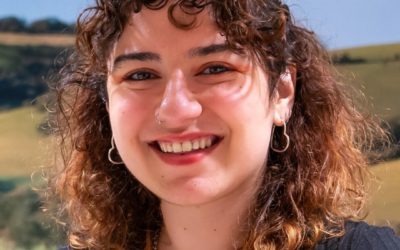Samantha (Sam) Dougherty is a rising senior at Pennsylvania State University who is majoring in political science and minoring in media studies. Based on what she learned from the 20+ presenters who participated in our Art & Conversation event, she wrote a paper that details her new insights and opinions on the intersection of political science with art and philosophy.
Read it below.

I have chosen the image above to illustrate this article because, for me, it represents the impact of art transcending countries and political boundaries. The unity of the people from different countries shows that art is a universal form of communication and can be used for social progress.
© Hibrida13 | Dreamstime.com
Through Art & Conversation, a four-day online event that embodied the themes evoked by the virtual art exhibition entitled COVID-19 PAGES: The Influence & Inspiration of Women, I have learned that art, philanthropy and politics have more in common than what meets the eye.
My initial understanding of art stemmed from walking through museums or my high school art classes, but this experience has truly changed my comprehension. My entire internship experience has expanded my knowledge of these three subjects and has opened my eyes to the possibilities that can be created from their intersection. Experiencing artwork for social causes and mental health advocacy has inspired me to celebrate and appreciate creativity.
The first day of Art & Conversation, which focused on youth inclusion and mental health through art, highlighted the combination of philanthropy and art at work. Leslye Long and her company, Boundless, create an opportunity for people of all ages to make visual art. So often, elderly and underprivileged groups aren’t given opportunities for creative exploration. By describing people as having absolutely no boundaries and creating this artistic space, Boundless empowers those who need it most. Boundless’ mission is inspirational to me because it encompasses the idea of philanthropy through art.
Day 1 also included the introduction to a new author and her book that supports mental health awareness in youth. Colleen Olinski and her book, A Wolf Named Elvis, start an important conversation surrounding the stresses of childhood and the emotions of growing up. The creation of this book and conversation is an example of art being an outlet for mental health advocacy. A Wolf Named Elvis gives voice to this issue, which is often overlooked by parents and other adult influencers in a child’s life. Openly talking about mental health, in an age-appropriate way, is a form of social innovation that will positively impact future generations.
For me, the most impactful day of Art & Conversation, which perfectly intersected art with philanthropy and politics, showcased art for social causes (Day 3). Experiencing the speakers and topics presented on this day pushed me to rethink my idea of the impact that art can have. Seeing artforms specifically made to combat injustices is powerful and starts essential political conversation. An impactful example was Visionaries of the Creative Arts, which is described as “…a nonprofit organization that provides a space for BIPOC Deaf & Hard of Hearing Artists to collectively create, collaborate & showcase their culturally distinct work while addressing social justice and racial equity through creative arts” (Visionaries of the Creative Arts). VOCA’s philanthropic work compels people to further understand the struggles of the deaf and hard of hearing community. By giving this community a platform through which it can share its adversity with the world, the hearing can gain a more internal understanding of it. The artist’s ability to channel hardship into creative composition truly captures the idea of art for social causes.
My main takeaway from the experience of Art & Conversation was that art is an outlet to give voice to difficult conversations. Art has the power to represent a philanthropic cause or start a political conversation… or both. So many artists throughout Art & Conversation were consistent reminders that art comes in many influential forms. Whether it be through advocacy for BIPOC deaf and hard of hearing people or mental health for children, this form of social activism is an important vehicle for change. The conversations started through the experience taught me that working towards solving social problems is possible through art. I believe that this is due to the fact that art is able to transcend race, religion and socioeconomic status to bring communities together and create these conversations. I hope to be able to implement these practices of empowerment in my own life and make political progress through artistic means.



